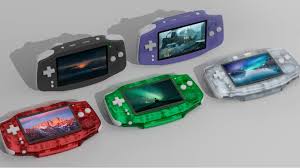Stainless steel device for common ear problem

Islamabad, January 26 (Newswire): Otolaryngologists now use a stainless steel device to insert into the ear that provides an easier, safer and faster treatment for a common problem associated with earaches, chronic otitis media with effusion.
The tiny device consists of a hollow rod with a collar that holds the tube in place, allowing the surgeon to insert the tube with one motion and suction out any residual fluid that might be in the middle ear space.
Three out of four children fall victim to an ear infection by the time they’re three years old, many of them during winter when viruses abound. Treating the common problem can be a tedious procedure, but a new device makes healing ears simple.
For years, Nancy Mazurianic has watched her son Tristen suffer from painful ear infections.
“It was awful,” Nancy said. “You hate to see your kid in pain like that.”
For some patients, doctors insert tiny tubes inside the ears to ease pressure and fluid buildup and relieve pain. Multiple medical instruments are normally used for the procedure, putting delicate ears at risk for injury. “The skin is so thin in the ear canal that if you just touch it with an instrument, it will start to bleed,” said Bradley Kesser, M.D., an otolaryngologist at the University of Virginia in Charlottesville, Va.
Now, otolaryngologists — or ear, nose and throat specialists — have a new tiny device that makes the procedure safer, easier and faster so there’s less risk of injury.
“With a single instrument, we’re able to insert the tube and suction out any residual fluid that might be in the middle ear space,” Dr. Kesser said.
Under general anesthesia, doctors make a small incision in the eardrum. Then the new device, a hollow rod holding a tiny tube, is inserted into this small opening with one motion. The tube lets air in and drains any fluid out. Eventually, the tube falls out.
“We’ve devised an instrument to increase the reliability of ear tube insertion, increase its safety and potentially increase its speed,” Dr. Kesser said.
Tristen’s procedure was a success, and his mom is thrilled to see him pain-free.
“It’s been just amazing,” Nancy said. “He’s been a happy little camper [and] never complains about the ears at all anymore.”
There are three main parts to the human ear: outer, middle and inner ear. The outer ear is the part you can see and opens into the ear canal leading to the middle ear. The middle ear is a closed, air-filled chamber, separated from the outer ear by the ear drum, and ventilated by the Eustachian tube.
Sometimes the pressure in the middle ear becomes higher or lower than that in the outer ear, causing hearing loss, severe pain, and the accumulation of fluid in the middle ear. The inner ear contains the hearing nerve that leads to the brain. It detects sound vibrations and turns them into electrical nerve impulses, which the brain then interprets as sound.
Chronic middle ear fluid is a condition known as otitis media with effusion (OME).When this condition becomes persistent, and antibiotics aren’t effective, it is often treated with surgical insertion of ear ventilation tubes. More than 700,000 children undergo this procedure each year. But the tubes often fall out within four to seven months, and the patients may have a recurrence of the condition.





